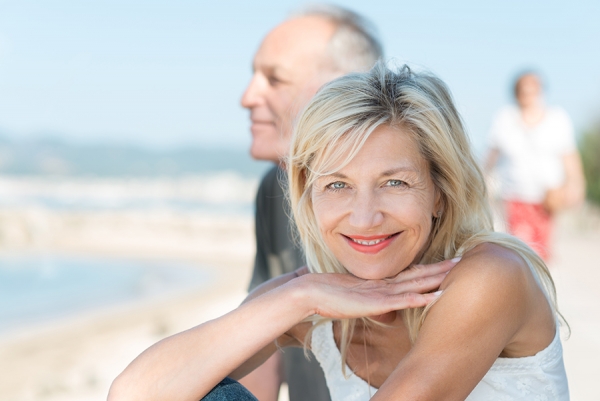The Impact of Sun Exposure on Skin Aging

The process of skin aging as the years go by and an individual gets older is known as intrinsic aging, which is determined by internal physiological factors and genes. This chronological aging is not preventable.
However, extrinsic aging is caused by external sources, such as climate, pollution, diet, and stress. These factors are largely controllable. The greatest culprit of extrinsic aging is photo-damage or the exposure to ultraviolet light from the sun. Chronic sun exposure is responsible for most of the visible aging on the face, far greater than any other factor. Thus, the common name for extrinsic aging is photoaging. Changes in the skin’s appearance and structure might manifest through dryness, loss of volume, fine lines and deep wrinkles, sagging, coarseness, blotchy or irregular pigmentation or dark spots, and loss of elasticity.
But, here is the good news. Researchers have found that, for most, only about 10 percent to 15 percent of skin aging is intrinsic and about 85 percent to 90 percent is extrinsic and controllable. Armed with this knowledge, it is up to professionals to help clients reverse some of that sun damage. Teach clients to protect themselves against ultraviolet exposure every day, year-round.
UVB AND UVA RAYS
UVB short wavelengths are the burning rays which burn the more superficial layers of the skin. A tan is actually the result of the overproduction of melanin. This is the skin’s natural response to protect against damage. Chronic or excessive sun exposure can cause skin cells producing melanin to mutate and divide uncontrollably, resulting in uneven and irregular pigmentation of the skin.
UVA wavelengths are longer and can penetrate deeper into the dermis. Free radicals from UVA radiation break down skin’s collagen and elastin. UVA rays are known as the aging rays. Ultraviolet radiation from the sun is associated with about 90 percent of all skin cancers.
SUNSCREEN
Teach clients to rock sunscreen, every day, year-round, rain or shine, or try to avoid being outside during the hours of the day when ultraviolet exposure is the highest, between 10 a.m. and 4 p.m. Broad-spectrum protection is essential in the fight against sun damage. Physical sunscreens, such as zinc oxide and titanium dioxide, deflect the sun’s rays. Chemical sunscreens, such as stabilized avobenzone and mexoryl, absorb the sun’s rays. Clients should choose one with an SPF of 30 or more, with water-resistance.
Clients should apply enough sunscreen to cover all exposed skin 15 minutes before going outdoors. Most adults need about one ounce (enough to fill a shot glass) to fully cover their body. And, protecting the lips with either a lipstick or a lip balm that contains SPF 30 or higher is also essential. Reapplying every two hours is key, as well as reapplying more often if the clients have been swimming or sweating excessively.
PREVENTATIVE MEASURES
Help clients understand that ultraviolet exposure is not just on the beach and when walking outdoors. UVA rays can filter through clouds and penetrate through glass, so clients are even exposed when driving in cars, sitting on an airplane, and even on the coldest, cloudiest days.
Sunscreen alone cannot fully protect clients’ skin. They should:
- wear protective clothing, such as a lightweight long-sleeved shirt, pants, a wide-brimmed hat, and sunglasses, when possible
- use extra caution near water, snow, and sand, as they reflect the damaging rays of the sun, which can increase the chance of sunburn
- avoid tanning beds, which can cause skin cancer and wrinkling; instead use a self-tanning product, but continue to use sunscreen with it
The sun does not just fast-track the aging process; it is also deadly. The World Health Organization has said ultraviolet radiation from the sun is “known to be carcinogenic to humans,” stressing there is proven scientific research that sun exposure causes skin cancer. Help clients remember anyone can get skin cancer, regardless of age, gender, or race. In fact, it is estimated that one in five Americans will develop skin cancer in their lifetime.
Annette Hanson